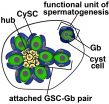(Press-News.org) CORVALLIS, Ore. - Air pollution controls installed at an Oregon coal-fired power plant to curb mercury emissions are unexpectedly reducing another class of harmful emissions as well, an Oregon State University study has found.
Portland General Electric added emission control systems at its generating plant in Boardman, Oregon, in 2011 to capture and remove mercury from the exhaust.
Before-and-after measurements by a team of OSU scientists found that concentrations of two major groups of air pollutants went down by 40 and 72 percent, respectively, after the plant was upgraded. The study was published in the journal Environmental Science & Technology this month.
The Boardman plant, on the Oregon side of the Columbia River about 165 miles east of Portland, has historically been a major regional source of air pollution, said Staci Simonich, environmental chemist in OSU's College of Agricultural Sciences and leader of the study team.
"PGE put control measures in to reduce mercury emissions, and as a side benefit, these other pollutants were also reduced," she said.
The pollutants in question are from a family of chemicals called polycyclic aromatic hydrocarbons (PAHs), which are formed from incomplete combustion of fossil fuels and organic matter. PAHs are a health concern because some are toxic, and some trigger cell mutations that lead to cancer and other ailments.
Simonich and her team tracked concentrations of airborne PAHs during 2010 and 2011 at Cabbage Hill, Oregon (elevation 3,130 feet), about 60 miles east of the Boardman plant, and also at the 9,065-foot summit of Mount Bachelor 200 miles to the southwest.
They sampled approximately weekly from March through October of 2010, and again from March through September of 2011. They analyzed the samples for three major groups of PAHs: the parent chemicals and two "derivatives"-- groups of PAH chemicals resulting from the decomposition of the parent PAHs.
The 2011 measurements at Cabbage Hill showed significantly reduced concentrations of the parent PAHs and also of one of the derivative groups, called oxy-PAHs (OPAHs). The other derivative group, called nitro-PAHs (NPAHs), did not show significant reduction. The NPAHs were more likely to have come from diesel exhaust associated with Interstate Highway 84, Simonich said.
Some of the individual PAH chemicals were reduced so much after the upgrade that the researchers couldn't tell from the data whether the plant was running or not, she added.
"The upgrades reduced the PAH emissions to the point where we could hardly distinguish between air we sampled along the Gorge and at the top of Mount Bachelor." While Oregon's mountaintops typically have less air pollution than lower-lying areas, Simonich's previous work has shown that they are not pristine.
She and her student Scott Lafontaine stumbled upon the Boardman findings while studying PAHs that originate in Asia and ride high-level air currents across the Pacific Ocean. They were measuring how much of each PAH type was coming from Asia, and how much from within the Northwest or elsewhere.
"We wanted to see if there was the same level of trans-Pacific transport at lower elevations--where people actually live--as we've previously found at Mount Bachelor," Simonich said.
When the researchers analyzed the Cabbage Hill data for 2010, they found high levels of the chemicals they were studying, but the pollutants did not have an Asian signature.
Then in 2011, they found that the Cabbage Hill concentrations of the parent PAHs and OPAHs were much lower than they'd been in 2010.
"We looked at the data and said, 'Wow! 2010 is different from 2011, and why should that be?'" Simonich said. "We had trouble understanding it from a trans-Pacific standpoint. So we started thinking about regional sources, and that's what led us to look at emissions from Boardman."
They got in touch with officials at PGE and learned about the April 2011 upgrade. Their review of PGE's emission records revealed correlations with their own measurements. They concluded that the reductions in PAH concentrations at the Cabbage Hill site were caused by the 2011 upgrade.
The upgrade may also aid her research, Simonich said. "When you have a major point source of pollution nearby, it's hard to pick out the signal of the Asian source coming from farther away. Now that these emissions are reduced, we may be able to pick up that signal much better."
More important, she said, the air is cleaner.
"Boardman used to be a major source of PAH pollution in the Columbia River Gorge, and now it's not," she said. "That's a good thing for PGE and a good thing for the people living in the Gorge."
INFORMATION:
The study was funded by the OSU Superfund Research Program, a multidisciplinary center administered by the National Institute of Environmental Health Sciences. Pacific Northwest National Laboratory and the Confederated Tribes of the Umatilla Indian Reservation collaborated on the research.
A new computational model of how the brain makes altruistic choices is able to predict when a person will act generously in a scenario involving the sacrifice of money. The work, led by California Institute of Technology scientists and, appearing July 15 in the journal Neuron, also helps explain why being generous sometimes feels so difficult.
The reason people act altruistically is well contested among academics. Some argue that people are innately selfish and the only way to override our greedy tendencies is to exercise self-control. Others are more positive, believing ...
WASHINGTON, DC - July 15, 2015 - For decades, researchers have worked to improve cacao fermentation by controlling the microbes involved. Now, to their surprise, a team of Belgian researchers has discovered that the same species of yeast used in production of beer, bread, and wine works particularly well in chocolate fermentation. The research was published ahead of print July 6th in Applied and Environmental Microbiology, a publication of the American Society for Microbiology.
"Chemical analyses as well as tasting the chocolate showed that the chocolate produced with ...
LAWRENCE -- American media in effort to highlight a diverse set of voices in covering politics generally over-represent the amount of people who contribute to policy making when compared with journalists in South Korea.
A University of Kansas researcher made the findings as part of a recent study that examined how government officials were treated in front-page news coverage between the two free-press nations. The article by Jiso Yoon, a KU assistant professor of political science, and co-author Amber Boydstum, an assistant professor of political science at the University ...
AURORA, Colo. (July 15, 2015) - Physicians at the University of Colorado School of Medicine on the Anschutz Medical Campus have published research that suggests a safe and lower-cost way to diagnose and treat problems in the upper gastrointestinal tract of children.
The researchers assessed the effectiveness of unsedated transnasal endoscopy (TNE) in evaluating pediatric patients with potentially chronic problems in their esophagus, which is the tube that connects the patient's mouth to the stomach. The research team included Joel A. Friedlander, DO, MA-Bioethics, Jeremy ...
The human genome encodes roughly 20,000 genes, only a few thousand more than fruit flies. The complexity of the human body, therefore, comes from far more than just the sequence of nucleotides that comprise our DNA, it arises from modifications that occur at the level of gene, RNA and protein.
In a new study, researchers from the University of Pennsylvania School of Veterinary Medicine show how one of these modifications, which occurs after RNA is translated into proteins, has the power to greatly influence the function of an enzyme called PRPS2, which is required for ...
Athens, Ga. - Researchers from the University of Georgia have determined that various freshwater sources in Georgia, such as rivers and lakes, could feature levels of salmonella that pose a risk to humans. The study is featured in the July edition of PLOS One.
Faculty and students from four colleges and five departments at UGA partnered with colleagues from the Centers for Disease Control and Prevention and the Georgia Department of Public Health to establish whether or not strains of salmonella exhibit geographic trends that might help to explain differences in rates ...
DURHAM, N.C. - Children with even mild or passing bouts of depression, anxiety and/or behavioral issues were more inclined to have serious problems that complicated their ability to lead successful lives as adults, according to research from Duke Medicine.
Reporting in the July 15 issue of JAMA Psychiatry, the Duke researchers found that children who had either a diagnosed psychiatric condition or a milder form that didn't meet the full diagnostic criteria were six times more likely than those who had no psychiatric issues to have difficulties in adulthood, including ...
Children with psychiatric problems were more likely to have health, legal, financial and social problems as adults even if their psychiatric disorders did not persist into adulthood and even if they did not meet the full diagnostic criteria for a disorder, according to an article published online by JAMA Psychiatry.
Neuropsychiatric disorders among young people ages 10 to 24 are a leading cause of disease burden globally. Unlike many chronic physical health problems, most psychiatric disorders are first diagnosed in childhood, which allows the disorder to affect a person's ...
PHILADELPHIA - Stem cells are key for the continual renewal of tissues in our bodies. As such, manipulating stem cells also holds much promise for biomedicine if their regenerative capacity can be harnessed. However, understanding how stem cells govern normal tissue renewal is a field still in its infancy.
Researchers at the Perelman School of Medicine at the University of Pennsylvania are making headway in this area by studying stem cells in their natural environment in an organism. Stem cell populations reside in areas called niches deep within different types of organs. ...
States with more restrictive alcohol policies and regulations have lower rates of self-reported drunk driving, according to a new study by researchers at the Boston University schools of public health and medicine and the University of Minnesota School of Public Health.
The research team assigned each state an "alcohol policy score," based on an aggregate of 29 alcohol policies, such as alcohol taxation and the use of sobriety checkpoints. Each 1 percentage point increase in the score was found to be associated with a 1 percent decrease in the likelihood of impaired driving, ...

